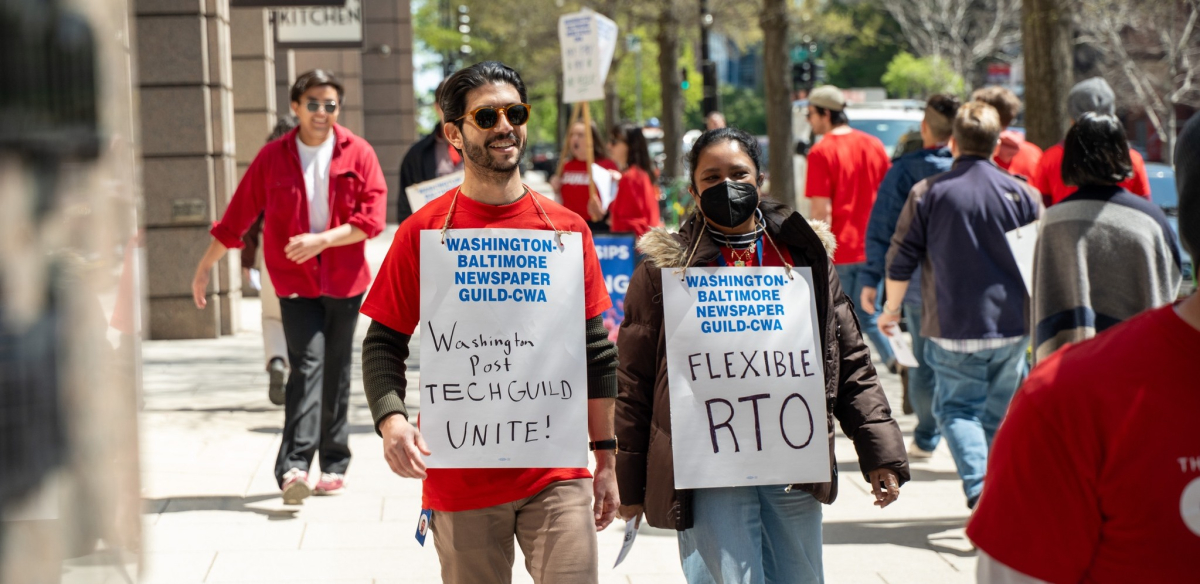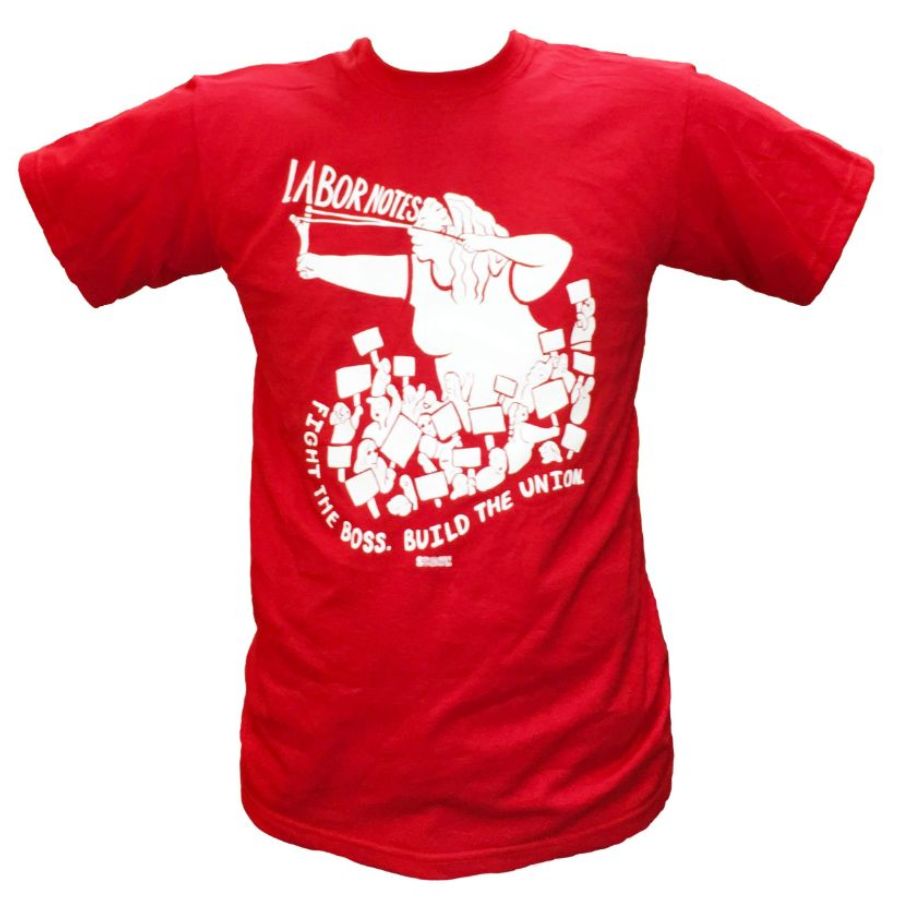The news industry has undergone a sea-change in the last two decades. Print readership of newspapers has declined sharply, while their digital readership has edged up slowly. Local newspapers have consolidated into ever larger chains controlled by private equity and vulture funds. Newer digital-only media sites have multiplied.
Into this changing news landscape has come an influx of new journalists who bridle at the poor working conditions and low pay inflicted by media moguls building their empires on the cheap. Thousands of these media workers are finding a home in the NewsGuild.
The Guild has transformed itself in recent years, thanks to rising rank-and-file militancy and innovative organizing tactics. Since 2020, the Guild has organized 210 workplaces, including some of the largest media organizations in the U.S. That includes 600 tech workers at the New York Times (the largest unionized tech unit in the country), 226 workers at Politico, and 180 workers at The Atlantic magazine, as well as smaller operations like 20 workers at the Anchorage Daily News.
The Guild is a sector of the Communications Workers, which also represents workers in telecommunications, airlines, the public sector, and manufacturing. Since 2020, the Guild has grown faster than any other CWA sector or district, organizing more than 8,500 workers. Today the Guild represents 25,800 workers in 519 workplaces in the U.S. and Puerto Rico. The Guild also has 6,000 members in Canada.
In the past five years, the Guild has conducted 95 strikes, many of them short and almost all successful (although a difficult strike at the Pittsburgh Post-Gazette passed the 1,000-day mark in July). Many of these strikes were part of fights to win first contracts. Since January 2024 alone, the Guild has negotiated 62 first-time contracts. The Guild also represents an increasing number of staff workers at non-profits and unions.
MEMBER-TO-MEMBER ORGANIZING
At the heart of the Guild’s winning strategy is member-driven organizing. The union is enlisting rank-and-file members who have successfully organized their own union to help workers at other sites get organized. Some of these workers are volunteers, while others are paid by the Guild for a few hours a week. The strategy partly evolved out of necessity, as the organizing opportunities popping up across the country outpaced the capacity of the Guild’s small full-time staff.
With member-to-member organizing, says Jon Schleuss, the Guild’s international president, workers looking to unionize “get to learn from another rank-and-file worker who just won an election themselves, and that’s a powerful experience. And then it replicates itself and you win again—and then you get more member organizers.”
Schleuss joined the Guild as a digital news journalist at the Los Angeles Times, after helping lead a successful drive to unionize the newsroom in 2015. He was elected president of the NewsGuild in 2019 at just 32 years old. The member-organizer strategy has flourished under his watch.
Stephanie Basile, a Guild staffer who leads the member-organizing effort, says the basic idea is to “democratize and demystify the organizing process. We believe these are skills that can be taught and shared far and wide.”
In training sessions, member-organizers help each other figure out the next step in their campaign. “We have this philosophy of ‘learn, do, teach’ to train other members to take on the tasks and share the work,” Basile says.
‘GROUP THERAPY FOR ORGANIZERS’
Down in the newsroom trenches, the Guild’s member-organizers sense the power of this rank-and-file approach.
“Organizing can be hard—it can be exhausting,” says Megan Gray, arts and culture reporter at the Portland Press Herald and president of The News Guild of Maine. The Maine member-organizers’ monthly meetings are “sort of group therapy for organizers,” she says.
By sharing experiences, organizers come up with new ways to solve problems and hear practical advice on building solidarity. The News Guild of Maine’s culture of organizing began taking root in 2022 after journalists at the Bangor Daily News reached out to the union, and, with the help of Guild member-organizers, won representation.
The union’s member-driven organizing has also fostered a rank-and-file approach to bargaining.
Danielle Newsome, NewsGuild’s director of collective bargaining, said that leadership decided that the union needed to train more members to support bargaining in both their own shops and other shops.
“The people who know the issues the best, who are used to dealing with management every day, should take the lead at the bargaining table,” Newsome said.
The Guild’s grassroots militancy has been fueled in part by large Guild attendance at Labor Notes conferences, held every two years in Chicago. At each of the last two conferences, the Guild sent more than 100 members. It hopes to send even more next year. “We go to the trainings, we meet other rank-and-file members, and we take things back and incorporate them into our training,” says Schleuss.
One strategy the union picked up from Labor Notes and other unions, he says, is open bargaining, where the union insists that members be allowed to sit in on bargaining sessions with the company. When members see bosses taking hardline, inflexible stances, militancy grows.
STRIKE READY
The Guild has shown that it is ready to walk off the job when necessary. Hundreds of workers walked the picket lines at the New York Times last fall during an eight-day strike by tech workers. The walkout, which was organized with support from member-organizers, took place during the week of the presidential election—a moment when the union felt it had its greatest leverage. The Times was unable to publish a lot of the special features it had planned for the election, says Kathy Zhang, unit chair of the Times Tech Guild.
Zhang said that the union assigned three member-organizers to support the Tech Guild’s fight. The biggest issue leading up to the strike was the Times’ refusal to include a “just-cause” clause in the contract. The company had a history of firing workers without explanation, a practice that would be barred under the clause. A month after the strike, the union announced it had reached an agreement that included just-cause protections.
The Guild’s organizing strategy has caught the attention of Eric Blanc, professor of labor studies at Rutgers University. His new book, We Are the Union: How Worker-to-Worker Organizing Is Revitalizing Labor and Winning Big, highlights the Guild’s model.
“I think the NewsGuild has the best and most promising model of organizing in the country,” Blanc said in an interview. “I think every union in the country should be moving in the direction of the Guild, because what the Guild is doing is training up its worker-leaders to take on the responsibilities that often unions assume can only be done by staff.
“By giving more responsibility to workers for systematic training, the Guild is developing a program that can scale up,” said Blanc. “If we are going to organize tens of millions of workers, most unions will need to do what the NewsGuild is doing—which is to give more leadership and responsibility to worker-leaders.”
Randy Furst was an active member of the NewsGuild and a reporter at the Minnesota Star Tribune from 1973 to 2025. He retired this year.







